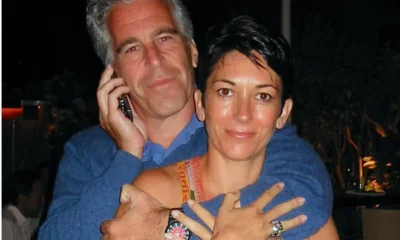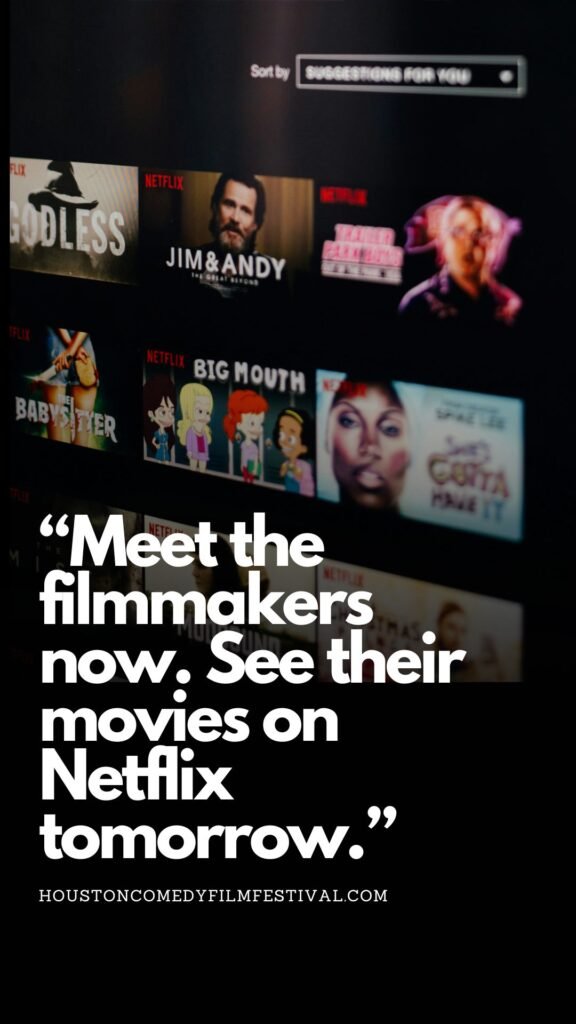News
New 2025 Travel Rules That Could Get You Denied Entry to Mexico

If you’re planning a trip to Mexico this year, it’s more important than ever to understand the country’s new entry requirements — or risk being denied at the border, fined, or even deported. While Mexico remains one of the most popular vacation destinations in the world, its immigration policies in 2025 have changed dramatically, catching thousands of travelers off guard. Here’s what you need to know to ensure your dream vacation doesn’t turn into a travel nightmare.
1. FMM Form Confusion – Some Airports Require It, Some Don’t
Historically, all travelers entering Mexico needed a Forma Migratoria Múltiple (FMM), commonly known as the tourist card. That rule has changed. As of 2025, you no longer need an FMM if you’re flying into major tourist hotspots like Cancun, Puerto Vallarta, Los Cabos, Tulum, and Mexico City. However, if you’re landing at any other airport, the FMM is still mandatory — and you must fill it out online before arrival. Border agents are turning away travelers who expect to complete the form upon landing. Always double-check if your airport requires the card and complete it ahead of time.

2. Proof of Travel Plans – No More “Just Seeing Where It Goes”
Gone are the days when travelers could breeze into Mexico with just a passport. Immigration officers now ask for full travel documentation — including hotel reservations, return flights, and a clear itinerary. If you can’t show proof of where you’re staying and for how long, you may be refused entry. Even more concerning, travelers aren’t always being granted the usual 180-day tourist stay anymore. Instead, immigration authorities may approve only the exact number of days you’ve booked accommodations for.
3. No Work – Not Even Remotely
If you’re a digital nomad planning to work remotely from a beachfront Airbnb, think twice about saying so at the border. Mexican immigration officers have strictly banned any type of work on a tourist visa, including online or freelance jobs. Declaring plans to work remotely — even if it’s just checking emails — can result in denied entry. Additionally, reports suggest that immigration officials have begun analyzing travelers’ social media accounts during entry checks. Posts promoting “working from the beach” could raise red flags.
4. Show Me the Money – Financial Proof Now Required
Many travelers are also reporting being asked to prove they can afford their stay. You may be required to show bank statements, credit cards, or other documents demonstrating sufficient funds. Authorities are stepping up efforts to prevent illegal stays or under-the-table work, and vague or false documentation could result in serious consequences. Experts recommend bringing three months of financial records plus valid credit cards — just in case.

5. Electronics Limits – Hefty Fines for Too Much Tech
One of the most surprising developments in 2025 is Mexico’s strict enforcement of limits on personal electronics. Tourists are allowed to bring in:
- 1 laptop or tablet (not both)
- 3 phones
- 2 cameras
- 1 GPS
- 1 pair of binoculars
- 2 musical instruments
Customs officials, especially at airports like Cancun International, have been actively searching luggage and charging import fees of 19% per additional item over these limits. Bringing both a laptop and a tablet or an extra phone could easily result in a $200 to $400 fine, payable on the spot. There are no warnings about this rule during ticket booking or check-in — you’ll only find out at the airport.
6. Criminal Background Checks – Past Offenses May Deny You Entry
Thanks to enhanced information-sharing between the U.S. and Mexico, immigration authorities now have access to travelers’ criminal histories. Travelers with prior drug offenses or other serious crimes are being denied entry more frequently than in the past, even for offenses that occurred years ago.

7. Essential Entry Checklist for 2025
To avoid surprises at the Mexican border, follow this checklist:
- ✅ A valid passport with at least 3 months of validity and one blank page
- ✅ Completed FMM form (if required based on your destination)
- ✅ Printed hotel reservations for your full stay
- ✅ Printed return flight confirmation
- ✅ Proof of funds such as bank statements or credit cards
- ✅ A clear, detailed itinerary
- ✅ Compliance with electronics limits
- ✅ Absolutely no mention of work-related activities
Final Thoughts
Mexico continues to offer breathtaking landscapes, warm hospitality, and incredible culture, but in 2025, border enforcement is stricter than ever. These rules aren’t meant to scare travelers — they’re here to help ensure that tourists follow proper procedures and respect immigration law. Being prepared could be the difference between an unforgettable getaway — or being sent home before your vacation even begins.
Stay informed, travel smart, and enjoy the journey. ✈️🌴
Have you experienced these new rules at the airport? Share your story in the comments. For more updated travel tips, be sure to follow or subscribe — and safe travels!
Business
Google Accused Of Favoring White, Asian Staff As It Reaches $28 Million Deal That Excludes Black Workers

Google has tentatively agreed to a $28 million settlement in a California class‑action lawsuit alleging that white and Asian employees were routinely paid more and placed on faster career tracks than colleagues from other racial and ethnic backgrounds.
- A Santa Clara County Superior Court judge has granted preliminary approval, calling the deal “fair” and noting that it could cover more than 6,600 current and former Google workers employed in the state between 2018 and 2024.

How The Discrimination Claims Emerged
The lawsuit was brought by former Google employee Ana Cantu, who identifies as Mexican and racially Indigenous and worked in people operations and cloud departments for about seven years. Cantu alleges that despite strong performance, she remained stuck at the same level while white and Asian colleagues doing similar work received higher pay, higher “levels,” and more frequent promotions.
Cantu’s complaint claims that Latino, Indigenous, Native American, Native Hawaiian, Pacific Islander, and Alaska Native employees were systematically underpaid compared with white and Asian coworkers performing substantially similar roles. The suit also says employees who raised concerns about pay and leveling saw raises and promotions withheld, reinforcing what plaintiffs describe as a two‑tiered system inside the company.
Why Black Employees Were Left Out
Cantu’s legal team ultimately agreed to narrow the class to employees whose race and ethnicity were “most closely aligned” with hers, a condition that cleared the path to the current settlement.

The judge noted that Black employees were explicitly excluded from the settlement class after negotiations, meaning they will not share in the $28 million payout even though they were named in earlier versions of the case. Separate litigation on behalf of Black Google employees alleging racial bias in pay and promotions remains pending, leaving their claims to be resolved in a different forum.
What The Settlement Provides
Of the $28 million total, about $20.4 million is expected to be distributed to eligible class members after legal fees and penalties are deducted. Eligible workers include those in California who self‑identified as Hispanic, Latinx, Indigenous, Native American, American Indian, Native Hawaiian, Pacific Islander, and/or Alaska Native during the covered period.
Beyond cash payments, Google has also agreed to take steps aimed at addressing the alleged disparities, including reviewing pay and leveling practices for racial and ethnic gaps. The settlement still needs final court approval at a hearing scheduled for later this year, and affected employees will have a chance to opt out or object before any money is distributed.
H2: Google’s Response And The Broader Stakes
A Google spokesperson has said the company disputes the allegations but chose to settle in order to move forward, while reiterating its public commitment to fair pay, hiring, and advancement for all employees. The company has emphasized ongoing internal audits and equity initiatives, though plaintiffs argue those efforts did not prevent or correct the disparities outlined in the lawsuit.
For many observers, the exclusion of Black workers from the settlement highlights the legal and strategic complexities of class‑action discrimination cases, especially in large, diverse workplaces. The outcome of the remaining lawsuit brought on behalf of Black employees, alongside this $28 million deal, will help define how one of the world’s most powerful tech companies is held accountable for alleged racial inequities in pay and promotion.
Entertainment
What We Can Learn Inside 50 Cent’s Explosive Diddy Documentary: 5 Reasons You Should Watch

50 Cent’s new Netflix docuseries about Sean “Diddy” Combs is more than a headline-grabbing exposé; it is a meticulous breakdown of how power, celebrity, and silence can collide in the entertainment industry.
Across its episodes, the series traces Diddy’s rise, the allegations that followed him for years, and the shocking footage and testimonies now forcing a wider cultural reckoning.

1. It Chronicles Diddy’s Rise and Fall – And How Power Warps Reality
The docuseries follows Combs from hitmaker and business icon to a figure facing serious criminal conviction and public disgrace, mapping out decades of influence, branding, and behind-the-scenes behavior. Watching that arc shows how money, fame, and industry relationships can shield someone from scrutiny and delay accountability, even as disturbing accusations accumulate.

2. Never-Before-Seen Footage Shows How Narratives Are Managed
Exclusive footage of Diddy in private settings and in the tense days around his legal troubles reveals how carefully celebrity narratives are shaped, even in crisis.
Viewers can learn to question polished statements and recognize that what looks spontaneous in public is often the result of strategy, damage control, and legal calculation.
3. Survivors’ Stories Highlight Patterns of Abuse and Silence
Interviews with alleged victims, former staff, and industry insiders describe patterns of control, fear, and emotional or physical harm that were long whispered about but rarely aired in this detail. Their stories underline how difficult it is to speak out against a powerful figure, teaching viewers why many survivors delay disclosure and why consistent patterns across multiple accounts matter.
4. 50 Cent’s Approach Shows Storytelling as a Tool for Accountability
As executive producer, 50 Cent uses his reputation and platform to push a project that leans into uncomfortable truths rather than protecting industry relationships. The series demonstrates how documentary storytelling can challenge established power structures, elevate marginalized voices, and pressure institutions to respond when traditional systems have failed.
5. The Cultural Backlash Reveals How Society Handles Celebrity Accountability
Reactions to the doc—ranging from people calling it necessary and brave to others dismissing it as a vendetta or smear campaign—expose how emotionally invested audiences can be in defending or condemning a famous figure. Watching that debate unfold helps viewers see how fandom, nostalgia, and bias influence who is believed, and why conversations about “cancel culture” often mask deeper questions about justice and who is considered too powerful to fall.
Business
Luana Lopes Lara: How a 29‑Year‑Old Became the Youngest Self‑Made Woman Billionaire

At just 29, Luana Lopes Lara has taken a title that usually belongs to pop stars and consumer‑app founders.
Multiple business outlets now recognize her as the world’s youngest self‑made woman billionaire, after her company Kalshi hit an 11 billion dollar valuation in a new funding round.
That round, a 1 billion dollar Series E led by Paradigm with Sequoia Capital, Andreessen Horowitz, CapitalG and others participating, instantly pushed both co‑founders into the three‑comma club. Estimates place Luana’s personal stake at roughly 12 percent of Kalshi, valuing her net worth at about 1.3 billion dollars—wealth tied directly to equity she helped create rather than inheritance.

Kalshi itself is a big part of why her ascent matters.
Founded in 2019, the New York–based company runs a federally regulated prediction‑market exchange where users trade yes‑or‑no contracts on real‑world events, from inflation reports to elections and sports outcomes.
As of late 2025, the platform has reached around 50 billion dollars in annualized trading volume, a thousand‑fold jump from roughly 300 million the year before, according to figures cited in TechCrunch and other financial press. That hyper‑growth convinced investors that event contracts are more than a niche curiosity, and it is this conviction—expressed in billions of dollars of new capital—that turned Luana’s share of Kalshi into a billion‑dollar fortune almost overnight.
Her path to that point is unusually demanding even by founder standards. Luana grew up in Brazil and trained at the Bolshoi Theater School’s Brazilian campus, where reports say she spent up to 13 hours a day in class and rehearsal, competing for places in a program that accepts fewer than 3 percent of applicants. After a stint dancing professionally in Austria, she pivoted into academics, enrolling at the Massachusetts Institute of Technology to study computer science and mathematics and later completing a master’s in engineering.
During summers she interned at major firms including Bridgewater Associates and Citadel, gaining a front‑row view of how global macro traders constantly bet on future events—but without a simple, regulated way for ordinary people to do the same.

That realization shaped Kalshi’s founding thesis and ultimately her billionaire status. Together with co‑founder Tarek Mansour, whom she met at MIT, Luana spent years persuading lawyers and U.S. regulators that a fully legal event‑trading exchange could exist under commodities law. Reports say more than 60 law firms turned them down before one agreed to help, and the company then spent roughly three years in licensing discussions with the Commodity Futures Trading Commission before gaining approval. The payoff is visible in 2025’s numbers: an 11‑billion‑dollar valuation, a 1‑billion‑dollar fresh capital injection, and a founder’s stake that makes Luana Lopes Lara not just a compelling story but a data point in how fast wealth can now be created at the intersection of finance, regulation, and software.

 Entertainment2 weeks ago
Entertainment2 weeks agoWicked Sequel Disappoints Fans: Audience Verdict on For Good

 News4 weeks ago
News4 weeks agoYolanda Adams Questions Traditional Views on God’s Gender, Audience Reacts

 Entertainment2 weeks ago
Entertainment2 weeks agoAriana & Cynthia Say They’re in a ‘Non‑Demi Curious, Semi‑Binary’ Relationship… WTF Does That Even Mean?

 News3 weeks ago
News3 weeks agoEpstein Files to Be Declassified After Trump Order

 News4 weeks ago
News4 weeks agoTrump Throws Epstein Files at Clinton’s Door

 Entertainment4 weeks ago
Entertainment4 weeks agoAriana Grande’s Red Carpet: When Fans Forget Boundaries

 Entertainment4 weeks ago
Entertainment4 weeks agoHollywood’s Kiss or Miss Policy: Why Saying No Got Neal McDonough Blackballed

 Entertainment3 weeks ago
Entertainment3 weeks agoJimmy Cliff, Reggae Legend and Star of ‘The Harder They Come,’ Dies at 81





































